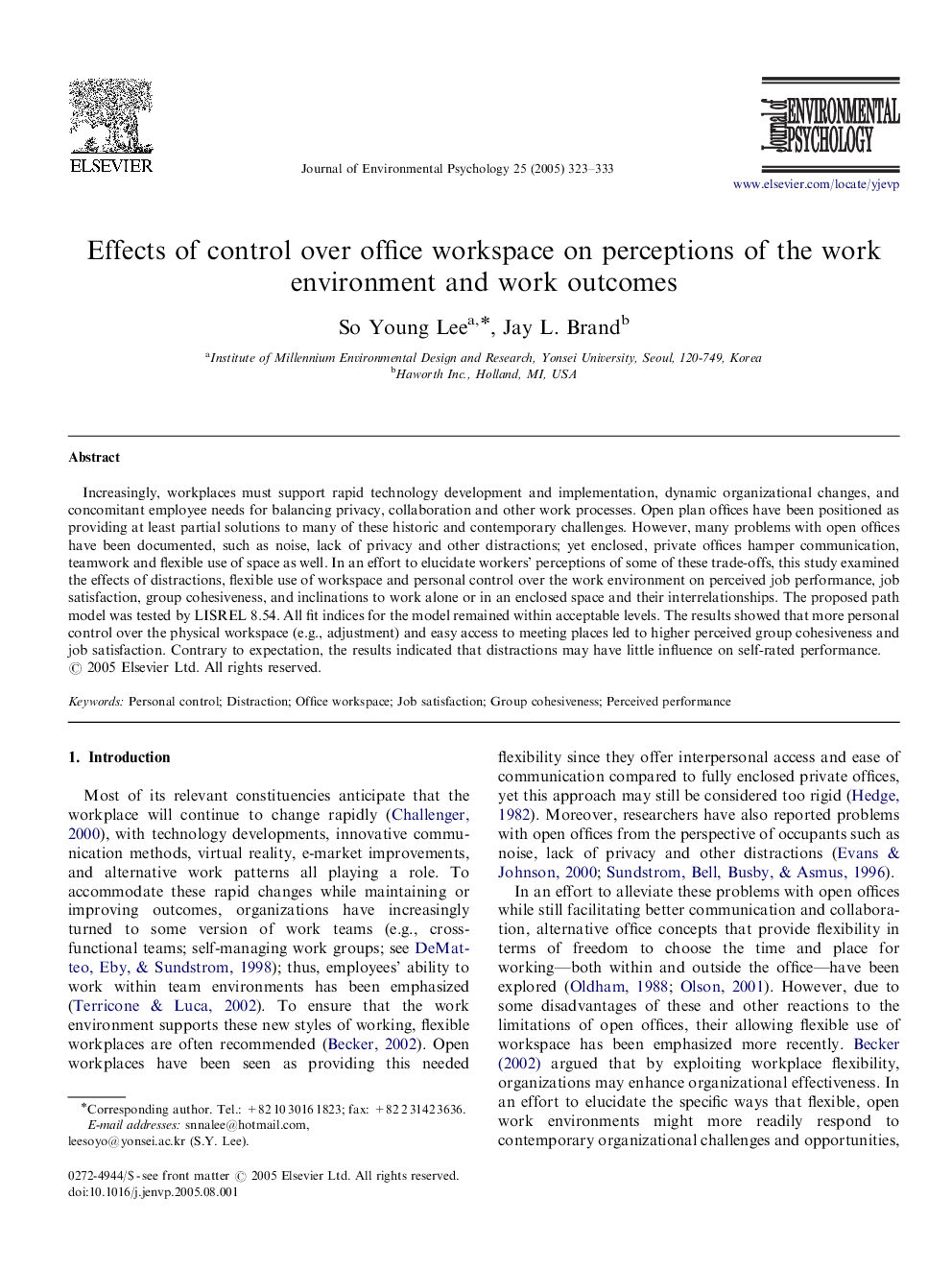| Article ID | Journal | Published Year | Pages | File Type |
|---|---|---|---|---|
| 10438631 | Journal of Environmental Psychology | 2005 | 11 Pages |
Abstract
Increasingly, workplaces must support rapid technology development and implementation, dynamic organizational changes, and concomitant employee needs for balancing privacy, collaboration and other work processes. Open plan offices have been positioned as providing at least partial solutions to many of these historic and contemporary challenges. However, many problems with open offices have been documented, such as noise, lack of privacy and other distractions; yet enclosed, private offices hamper communication, teamwork and flexible use of space as well. In an effort to elucidate workers' perceptions of some of these trade-offs, this study examined the effects of distractions, flexible use of workspace and personal control over the work environment on perceived job performance, job satisfaction, group cohesiveness, and inclinations to work alone or in an enclosed space and their interrelationships. The proposed path model was tested by LISREL 8.54. All fit indices for the model remained within acceptable levels. The results showed that more personal control over the physical workspace (e.g., adjustment) and easy access to meeting places led to higher perceived group cohesiveness and job satisfaction. Contrary to expectation, the results indicated that distractions may have little influence on self-rated performance.
Related Topics
Social Sciences and Humanities
Psychology
Applied Psychology
Authors
So Young Lee, Jay L. Brand,
